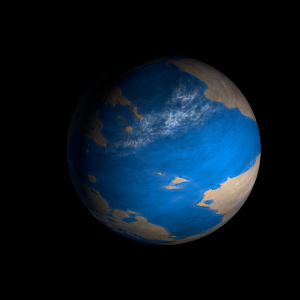|
|
Space Astro
|
Info for exoplanet "Ceepily Gete"
| Scientific (actual) data |
|---|
| Name | Kepler-698 b |
| Planet status | Confirmed |
| Radius | 0.328 |
| Orbital period | 16.3298 |
| Discovered | 2016 |
| Updated | 2021-02-05 |
| Tconj | 2455010 |
| Publication | Announced on a website |
| Detection type | Primary Transit |
| Alternate names | 2MASS J19140239+4118063 b, K00845.01, KIC 6032497 b, KOI-845 b, KOI-845.01, WISE J191402.43+411806.2 b |
| Star name | Kepler-698 |
| Right ascension | 288.51° |
| Declination | 41.3° |
| Mag j | 14.255 |
| Mag h | 13.87 |
| Mag k | 13.799 |
| Star distance | 1135 |
| Star metallicity | -0.03 |
| Star mass | 0.94 |
| Star radius | 0.91 |
| Star age | 4.27 |
| Star temperature | 5612 |
| Star alternate names | 2MASS J19140239+4118063, KIC 6032497, KOI-845, WISE J191402.43+411806.2 |
| Wikipedia article | Kepler-698 b |
Back
| |
| Fictional info (?) |
|---|
| Suggested name | Ceepily Gete |
| Planet type | Cold planet |
| It is a cold planet planet with a mass one-thousandth that of Kepler-698, but two-and-a-half times that of all the other planets in its solar system combined.
As seen from Kepler-698, in a frame of reference that rotates with the orbital motion, it appears to rotate only once every two years.
The volume of water detected has been estimated to be equivalent to the volume of water in Earth's oceans.
Because of its rapid rotation, the planet's shape is that of an oblate spheroid (it has a slight but noticeable bulge around the equator). The outer atmosphere is visibly segregated into several bands at different latitudes, resulting in turbulence and storms along their interacting boundaries.
Wind speeds can reach 45 metres per second. |
| Atmosphere | Carbon monoxide | 37% |
| Carbonyl sulfide | 25% |
| Hydrogen | 18% |
| Methane | 18% |
| Hydrogen peroxide | 0.7% |
| Water vapor | 0.52% |
| Hydrogen deuteride (HD) | 0.0043% |
| Argon | 0% |
| Atmospheric pressure | 9 bar |
 |
| Moon | Mede | Large irregular gaseous planetoid |
| Google search for Ceepily gete |
|
Website by Joachim Michaelis
|
|
|
|